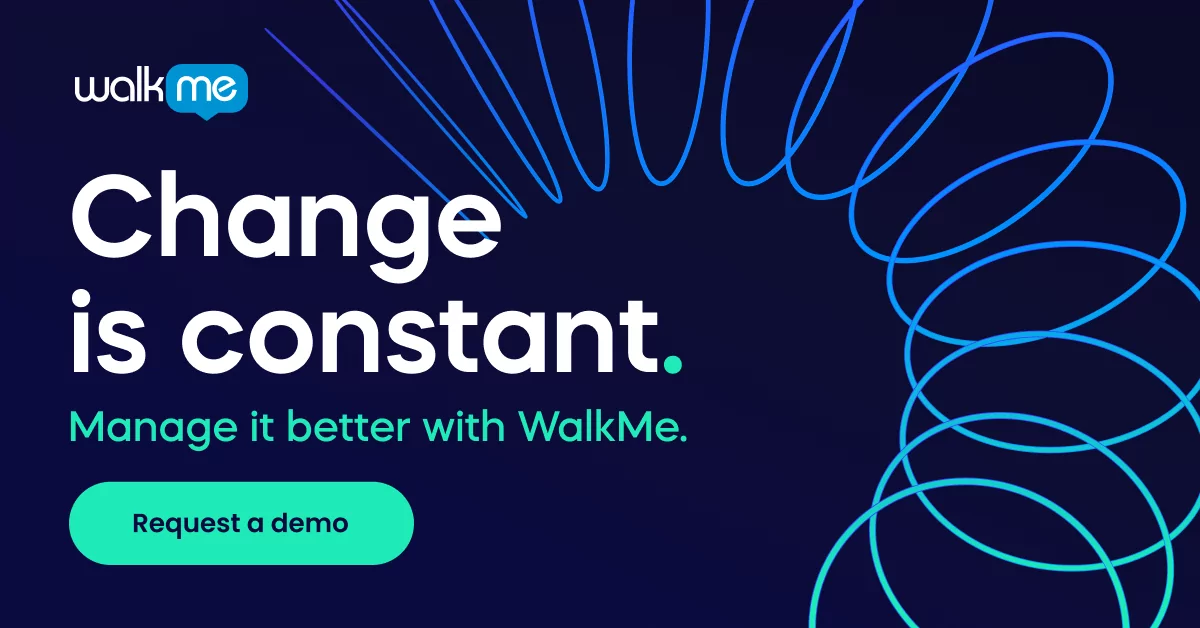In October of last year, Constellation Research conducted a survey of one hundred Fortune 500 CIOs on their strategies for 2021 and gave us all a sneak-peek at what’s to come in the aftermath of a global pandemic. What are future-focused CIOs expecting for the year to come?
The results are stunningly optimistic—especially for the growing role of an IT leader.
The opportunity
With top-level software acting as an integral piece in the larger puzzle of business continuity, CIOs are poised to lead the success of their organizations via digital transformation. Enablement of employees and customers through optimized digital channels will be the key to maximizing returns on investments.
So, how can CIOs be sure that the systems they have purchased are not just useful in theory, but will provide real value moving forward? WalkMe combed through Constellation’s report and in doing so, found a common thread to help tie together the visions of CIOs and the desired end-result of delivering business ROI at scale. Along with the key takeaways from Constellation’s report, WalkMe’s executive summary, The Future-Focused CIO: Defining Success Through Digital Adoption, provides the connection.
“Don’t use yesterday’s linear business solutions to tackle today’s exponential challenges.”
– Constellation Research, The CIO Outlook for 2021
The solution
A Digital Adoption Platform (DAP) or Digital Adoption Solution (DAS) changes the way organizations conduct business. TechRepublic described these systems as, “a pivotal technology that ensures proficiency of any software platform, website, or app and helps companies strengthen their position in the market, especially during the pandemic and beyond.”
Companies invest hundreds of millions of dollars in their applications, but then end up spending even more when they are used incorrectly. DAPs remove the guesswork for employees and executives alike through a holistic reimagining of how software works. Rather than having a disjointed and cumbersome tech stack with apps that challenge employees on a daily basis, consider having a solution that enables those users.
To use WalkMe’s Digital Adoption Platform as an example, some of the capabilities include:
- Analytics to provide a crystal-clear picture of the status of a company’s entire software portfolio and user statistics.
- Contextual, in-app and cross-application guidance to ensure any software, new or legacy, is adopted with a potential zero time-to-competency.
- Automation that saves endless hours spent on tedious, repetitive tasks to maximize the efficiency of employees and simplify customer experiences.
The outcome
A recent example of the power of DAP comes from Forrester’s Total Economic Impact (TEI) study in which they surveyed a number of WalkMe customers and found that they had achieved a 368% ROI for their software over a 3-year period. DAP removes any doubt from software implementations and builds upon current investments creating exponential value.
For the CIO who is managing a digital transformation and is looking to future-proof their organization, a digital adoption platform is the ultimate instrument. We are lucky enough to live in an era where software can enable us to work remotely, to be more efficient than ever before, and to thrive in the face of disruption. If this same technology instead acts as an obstacle, then it is all for naught.
Having a tool which ensures stability as the world turns makes all the difference.


